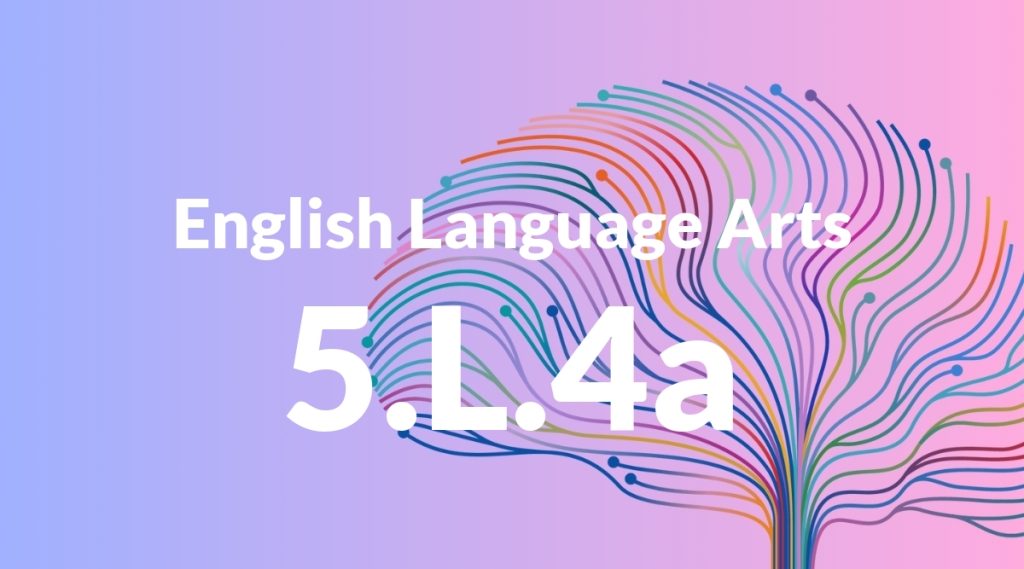Standard: 5.L.4 – Determine or clarify the meaning of unknown and multiple-meaning words and phrases based on grade 5 reading and content, choosing flexibly from a range of strategies.
Grade level: Grade 5
Subject: English Language Arts
Domain: Language
Teacher Overview
This standard focuses on helping students determine or clarify the meaning of unknown and multiple-meaning words and phrases in grade 5 reading and content. This is crucial as it enhances their reading comprehension and vocabulary, enabling them to tackle more complex texts across subjects. Students need to be familiar with basic context clues, the use of prefixes and suffixes, and how to use a dictionary or thesaurus.
After mastering this standard, students will be able to understand more complex texts and will be better equipped to handle nuanced language, preparing them for higher-level reading and writing tasks.
Common Misconception 1
A common misconception is that words have only one meaning. This is incorrect because many words have multiple meanings depending on the context in which they are used.
Intervention 1
To address this misconception, provide students with exercises that involve identifying the correct meaning of a word based on different contexts. Use texts where the same word appears with different meanings.
Common Misconception 2
Another misconception is that students should know the meaning of a word immediately. This is not true because understanding a word’s meaning can often require using multiple strategies and resources.
Intervention 2
To remediate this, encourage students to take their time and use various strategies such as context clues, word parts, and consulting dictionaries. Practice this through guided reading sessions.
Prerequisite Knowledge
Students should have a basic understanding of context clues, prefixes, suffixes, and root words. They should also be familiar with using a dictionary and thesaurus.
Subsequent Knowledge
After mastering this standard, students will be able to apply these strategies to more complex texts and will be better prepared to understand nuanced language in various subjects.
Instructional Activities
- Context Clue Challenge: Provide sentences with unknown words and have students use context clues to infer meanings.
- Prefix and Suffix Hunt: Have students find words with common prefixes and suffixes and determine their meanings.
- Multiple-Meaning Word Sort: Give students a list of words with multiple meanings and have them sort them based on different contexts.
- Dictionary Skills Workshop: Teach students how to effectively use a dictionary and thesaurus to find word meanings.
- Root Word Exploration: Explore common root words and their meanings to help students infer the meaning of new words.




